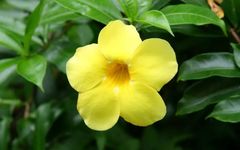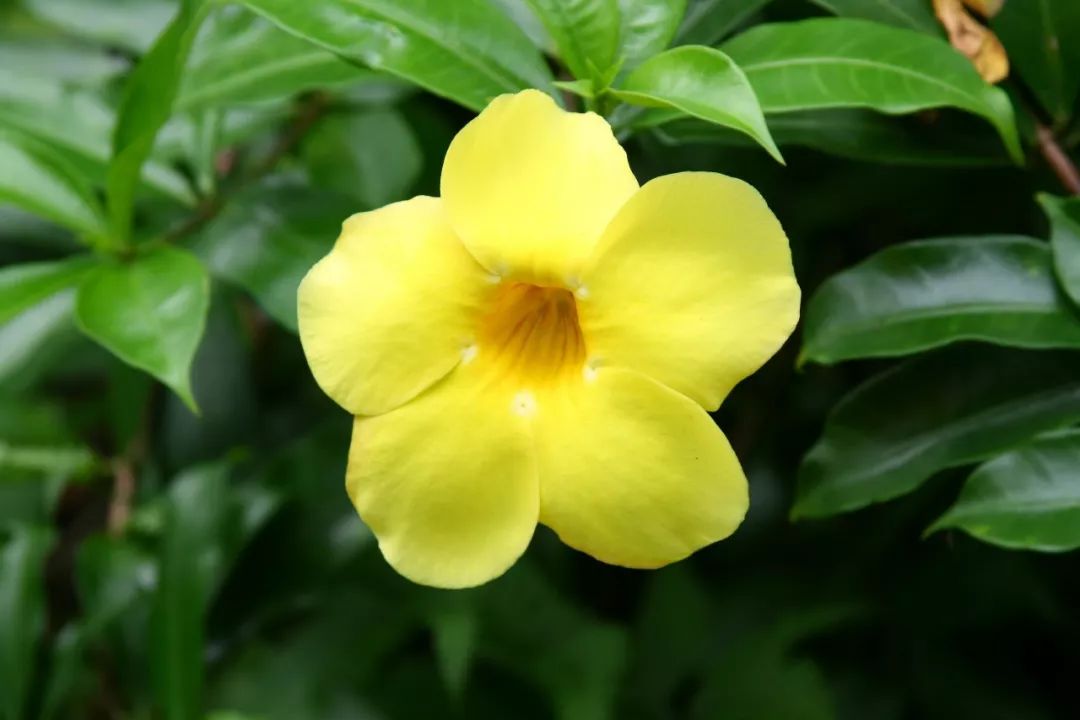
Introduction
In Traditional Chinese Medicine (TCM), the term “phlegm” (痰, tán) does not solely refer to the mucus produced in the lungs that can be expelled through coughing. TCM defines “phlegm” as pathological products characterized by turbidity, stickiness, and thickness, resulting from disorders in the metabolism of body fluids.
When the spleen’s ability to transform and transport water and dampness is impaired, or when there are obstacles in the circulation and excretion of body fluids, abnormal accumulations occur, leading to pathological substances. This abnormal accumulation of fluids is referred to as “phlegm-damp” (痰饮, tán yǐn).
Among these, the turbid, sticky, and thick components are called “phlegm” (痰, tán), while the clear, thin, and transparent components are referred to as “damp” (饮, yǐn).
Thus, in TCM, “phlegm” encompasses not only the mucus produced in the lungs but also pathological products resulting from fluid metabolism disorders.
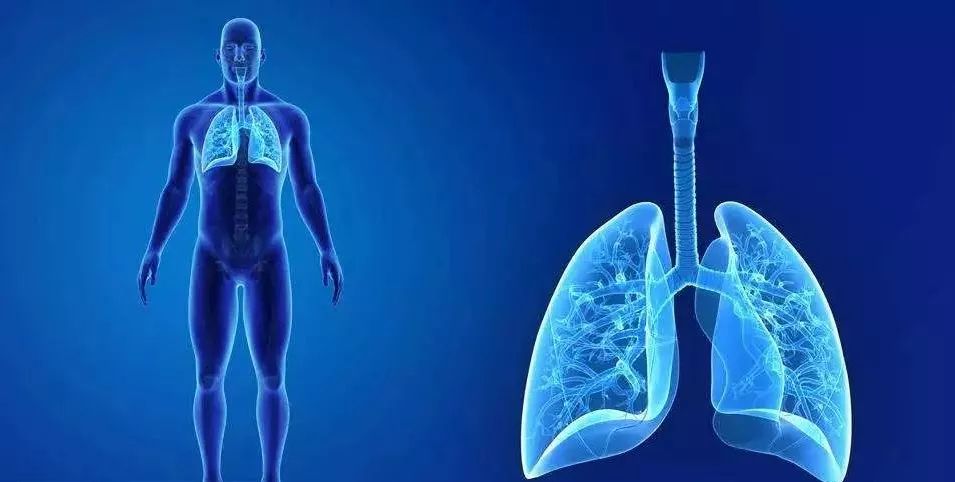
For instance, obesity is referred to as “phlegm” in TCM. This type of “phlegm” is not as easily recognized as the mucus from the lungs, hence it is termed “invisible phlegm” (无形之痰, wú xíng zhī tán), while the mucus that can be coughed up and observed is called “visible phlegm” (有形之痰, yǒu xíng zhī tán). Together, these two concepts form the TCM understanding of “phlegm”.
Visible phlegm primarily resides in the lungs and may arise from either internal fluid metabolism disorders or external pathogenic factors invading the lungs. Once produced, this phlegm can be expelled through coughing, making it easier to understand.
We are quite familiar with visible phlegm, especially during colds and coughs, but have we noticed the various characteristics of phlegm that can be coughed up?
For example, some phlegm may be white and viscous, while others may be thin and white, foamy, thick and yellow, gray-black, or yellow-green… Why does phlegm exhibit such diverse variations?
Upon careful analysis, the differences in the characteristics of phlegm can be summarized into two aspects: one is the texture, which can be thick, thin, or foamy; the other is the color, which can be white, gray-black, yellow, or yellow-green.
1
What do the different textures and colors of phlegm signify?
Let’s consider a common phenomenon: dissolving sugar in water creates a colorless and transparent liquid. If we heat this sugar water, what happens? We can observe that the sugar water gradually thickens, and its color changes from transparent to light yellow and then to deep yellow.
This phenomenon can be extrapolated to phlegm in the body; the thickness and color of phlegm are closely related to the presence of “heat” (热, rè) in the body. When there is heat, phlegm becomes yellow and thick; when there is no heat, phlegm is thin and white. The greater the thickness of the yellow phlegm, the higher the level of heat in the body.
According to this principle, TCM categorizes thin, white, or foamy phlegm as “cold phlegm” (寒痰, hán tán), while thick, yellow, or even yellow-green phlegm is classified as “hot phlegm” (热痰, rè tán).
Since cold phlegm and hot phlegm reflect completely opposite natures, their treatments are also entirely different. Cold phlegm requires warming and transformation, commonly using herbs such as dried ginger (干姜, gān jiāng), asarum (细辛, xì xīn), pinellia (姜半夏, jiāng bàn xià), tangerine peel (陈皮, chén pí), white mustard seed (白芥子, bái jiè zǐ), and radish seed (莱菔子, lái fú zǐ); while hot phlegm requires clearing heat and transforming phlegm, commonly using herbs like Zhejiang fritillary (浙贝, zhè bèi), Sichuan fritillary (川贝, chuān bèi), gardenia (天竺黄, tiān zhú huáng), rhizoma of the southern star (胆南星, dǎn nán xīng), trichosanthes (瓜蒌, guā lóu), and flower of the daylily (天花粉, tiān huā fěn).
Regardless of whether it is cold or hot phlegm, TCM emphasizes the concept of “transformation” (化, huà) in treatment. What does “transformation” mean? In the past, before the advent of running water, if the water quality was murky, we often added a small amount of alum (明矾, míng fǎn) to the water tank, and after a while, the water would become clear. The alum acted to decompose and settle the impurities in the murky water, which is the essence of “transformation”.
In TCM, the phlegm-transforming herbs used in treating various phlegm conditions serve a similar role to that of alum, helping to decompose and settle phlegm turbidity, thereby alleviating diseases caused by phlegm turbidity.
Western medicine also recognizes two types of phlegm: one is infectious phlegm, caused by bacteria, fungi, mycoplasma, or chlamydia infections; the other is exudative phlegm, often resulting from excessive secretion of mucus by respiratory mucosal cells.
In this context, antibiotics can be effective against phlegm caused by bacterial infections, but there are limited options for phlegm caused by fungi, mycoplasma, or chlamydia infections, as well as for exudative phlegm. How does TCM view and treat these phlegm-related diseases?
TCM posits that microorganisms such as fungi, mycoplasma, and chlamydia naturally exist in the air and do not harm the body under normal circumstances. It is only when there is excessive accumulation of dampness in the body, creating an overly humid internal environment, that these microorganisms proliferate and cause harm, leading to various diseases.
Therefore, the true root cause of these diseases lies in the “dampness” (湿, shī) of the internal environment. Just as in the rainy season, the humid environment allows for the proliferation of fungi, making things prone to mold. If we can recognize that humidity is the primary cause of fungal proliferation in nature, can we not apply the same understanding to the human body?

So, how should we treat phlegm caused by internal dampness? In daily life, dampness is often associated with overcast and rainy weather. When the sky is clear and the sun is shining, a humid environment is unlikely to form.
There is a saying: “When the sun is high, the haze dissipates,” which illustrates that the sun can drive away dampness, primarily through its heat. Therefore, when treating this type of phlegm, we should use warming herbs to create a “high sun” effect within the body, allowing the damp “haze” to dissipate. This eliminates the root cause of fluid accumulation in the body, preventing the environment conducive to the survival and reproduction of fungi and other microorganisms, thus providing rapid relief for phlegm caused by infections from fungi, mycoplasma, and chlamydia.
The Han dynasty physician Zhang Zhongjing proposed in the “Essentials of the Golden Chamber” (金匮要略, Jīn kuì yào lüè) that the principle for treating such conditions is “for those with phlegm-damp, one should use warming herbs to harmonize it.” This perspective remains remarkably insightful even today, and we cannot help but admire the ancient methods and thoughts in exploring the mysteries of life and disease.
2
Invisible Phlegm
Having discussed visible phlegm, what then is “invisible phlegm” and how can we determine its presence? TCM identifies four indicators for the presence of invisible phlegm in the body.
① Obesity. TCM states that “obese individuals often have phlegm-damp,” indicating that those who are overweight have a significant presence of invisible phlegm, as fat possesses the characteristics of phlegm: turbidity, stickiness, and thickness, formed from the accumulation of dampness in the body.
② Thick and greasy tongue coating. A thick and greasy tongue coating is the most direct manifestation of excessive water and dampness in the body.
③ Tumors. Any lump that is not red, protruding from the skin surface, and is nodular in shape, soft or resilient to touch, is referred to as a “phlegm mass” (痰块, tán kuài) in TCM.
④ Slippery pulse. TCM classifies pulse sensations into over twenty types, with slippery pulse being one of them. The description of a slippery pulse in TCM is “smooth and flowing, like pearls rolling on a plate,” indicating that the presence of a slippery pulse is a characteristic manifestation of phlegm turbidity in the body and is a primary basis for diagnosing phlegm in TCM.
Based on TCM’s understanding of phlegm, combined with Western medicine’s microscopic examinations, the concept of invisible phlegm can be made more concrete and intuitive. For instance, conditions such as hyperlipidemia, cysts, lymph node tuberculosis, and bone tuberculosis all exhibit characteristics of turbidity, stickiness, and thickness, and can thus be considered phlegm-related diseases. Therefore, Western medical examinations serve as an extension of TCM’s diagnostic methods of observation, listening, inquiry, and pulse-taking.
Through TCM’s understanding of the mechanisms of phlegm formation, we can relate the occurrence of these diseases to the overall balance of the body, finding fundamental treatment methods. For example, hyperlipidemia, cysts, and lymph node tuberculosis all align with the characteristics of TCM phlegm, and their root causes are related to the spleen’s dysfunction in transforming and transporting fluids, leading to excessive accumulation of phlegm turbidity in the body. Thus, treatments that strengthen the spleen, assist in fluid metabolism, and transform phlegm can be employed. Moreover, by addressing the root cause of phlegm formation, the treatment effects are long-lasting.
Here, I can provide two examples. One patient with hyperlipidemia had taken medications such as Shujian and Lipingzhi without significant improvement. He reported dizziness, fatigue, poor appetite, daytime sleepiness, frequent dreams at night, palpitations, and irregular bowel movements, with a pale complexion and a weak pulse. I diagnosed him with spleen deficiency leading to impaired fluid metabolism, resulting in the accumulation of phlegm turbidity in the blood vessels, affecting the circulation of qi and blood. I prescribed a formula to strengthen the spleen and transform phlegm: 30g of fried Atractylodes (炒白术, chǎo bái zhú), 15g of Codonopsis (党参, dǎng shēn), 10g of tangerine peel (陈皮, chén pí), 10g of pinellia (姜半夏, jiāng bàn xià), 6g of licorice (甘草, gān cǎo), 15g of Poria (茯苓, fú líng), 6g of tangerine pith (橘络, jú luò), 10g of southern star (胆南星, dǎn nán xīng), 15g of hawthorn (焦山楂, jiāo shān zhā), and 5 slices of ginger (生姜, shēng jiāng). After taking the seven doses, the patient reported significant improvement in energy and appetite, with dizziness reduced by more than half and bowel movements becoming regular. I then advised him to continue with the same formula for another seven doses. Upon his return for a follow-up, most of his symptoms had resolved, and his blood lipid levels had returned to normal ranges.
Another patient with a popliteal cyst came to consult me out of fear of surgery. TCM believes that the formation of cysts is the result of phlegm turbidity accumulating in a specific area, and the generation of phlegm turbidity is directly related to the spleen’s ability to transform and transport fluids. Therefore, by improving and enhancing the spleen’s function, we can eliminate the accumulation of phlegm turbidity in the body, thus resolving the cyst.
Based on this understanding, I prescribed a formula to strengthen the spleen, transform phlegm, and reduce swelling: 45g of fried Atractylodes (炒白术, chǎo bái zhú), 15g of Alisma (泽泻, zé xiè), 15g of talc (滑石, huá shí), 10g of poria (猪苓, zhū líng), 15g of Poria (茯苓, fú líng), 10g of cinnamon twig (桂枝, guì zhī), 20g of pinellia (半夏, bàn xià), 10g of prepared southern star (制南星, zhì nán xīng), 30g of coix seed (薏苡仁, yì yǐ rén), and 10g of green tangerine peel (青皮, qīng pí). This formula was taken continuously for about a month, and the popliteal cyst completely resolved. During this time, the formula was slightly adjusted based on symptom changes, but the main ingredients remained as stated. These two examples clearly demonstrate that the theory of phlegm in TCM withstands practical testing.
The spleen’s insufficient ability to transform and transport fluids leads to the accumulation of dampness in the body, and the turbid substances within the dampness can condense in specific areas, forming phlegm masses, as discussed with cysts, lymph node tuberculosis, and bone tuberculosis. They can also enter the meridians and blood vessels, traveling throughout the body with the circulation of qi and blood, as seen with hyperlipidemia.
These turbid substances possess sticky characteristics, often obstructing the flow of qi and blood in the meridians and vessels, causing pathological changes due to ischemia and hypoxia in the organs, leading to various diseases. For instance, if phlegm accumulates in the head, it can affect blood supply to the brain, resulting in symptoms such as dizziness, forgetfulness, drowsiness, and even coma, hemiplegia, or speech difficulties, which Western medicine refers to as cerebral infarction, but many cases in TCM are attributed to phlegm.
If phlegm accumulates in the limbs, it can lead to blood supply issues in the extremities, resulting in symptoms like numbness and coldness in the hands and feet. If phlegm accumulates in the blood vessels, it can lead to insufficient blood supply to the heart, causing palpitations, irregular heartbeat, and chest tightness, which Western medicine often associates with coronary heart disease, but many cases are closely related to phlegm.
Moreover, phlegm can also affect a person’s mental state. If the turbid qi of phlegm dampness obstructs normal cognitive activities, it can lead to symptoms such as excessive talking, depression, and unexplained sadness, which are classified as depressive disorders in TCM. Since TCM considers the “heart” (心, xīn) as the ruler of consciousness, such mental disturbances caused by excessive phlegm and turbidity are referred to as “phlegm obstructing the heart orifices” (痰迷心窍, tán mí xīn qiào).
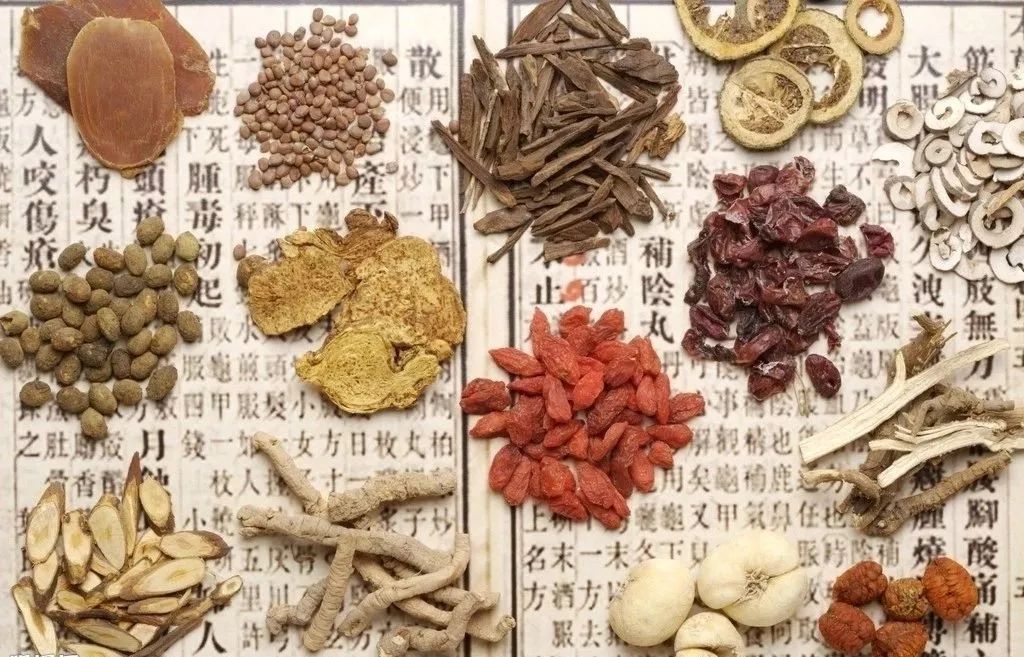
3
The Mobility of Phlegm
Regarding the mobility of phlegm, the great physician Zhu Danxi from the Yuan dynasty stated: “Phlegm, as a substance, rises and falls with qi, reaching everywhere.” It is precisely because of the characteristic that phlegm can reach anywhere that TCM attributes many strange diseases or conditions with poor treatment outcomes to phlegm.
Thus, there is a saying in TCM: “Strange diseases often arise from phlegm.” Zhu Danxi also proposed the theory that “many diseases are accompanied by phlegm,” which provides new insights into disease diagnosis and treatment.
Some diseases may have correct differentiation and appropriate medication, yet clinical outcomes are not ideal; in such cases, we can consider incorporating phlegm-transforming methods, which often yield unexpectedly positive results.
I once treated a patient with vertigo who had experienced symptoms for over a year. After squatting or sitting for a long time, if he stood up suddenly, he would experience blackouts and even fainting.
He felt drowsy throughout the day, had low energy, spoke softly, and had a pale complexion. His appetite was average, and his bowel movements were normal. His tongue was pale red with a thin white coating, and his pulse was weak. In the past month, his vertigo seemed to worsen. Western medicine diagnosed him with insufficient blood supply to the brain.
I thought this was a typical case of qi sinking. Qi deficiency leads to the inability of qi and blood to rise and nourish the head, which should be easy to treat. I prescribed five doses of the “Renovating Qi Decoction” (补中益气汤, bǔ zhōng yì qì tāng), and I confidently told the patient that he would definitely see significant improvement after taking the five doses.
However, five days later, the patient returned for a follow-up, and he poured cold water on my confidence by stating that there had been no improvement in his vertigo! He reassured me that perhaps it was due to the long duration of his condition, and improvement would take time. After further inquiry, I concluded that there was still no error in differentiation. Why was there no effect?
At that moment, I recalled Zhu Danxi’s saying that “many diseases are accompanied by phlegm,” and suddenly everything became clear. Since there was qi deficiency, it must have led to improper fluid metabolism, resulting in internal phlegm turbidity, which obstructed the brain and caused vertigo.
The previous treatment was ineffective because I had only considered qi deficiency without accounting for the phlegm turbidity present in the meridians and blood vessels. Therefore, I prescribed a new formula to tonify qi and transform phlegm: 15g of astragalus (黄芪, huáng qí), 15g of codonopsis (党参, dǎng shēn), 12g of fried Atractylodes (炒白术, chǎo bái zhú), 10g of pinellia (姜半夏, jiāng bàn xià), 10g of poria (茯苓, fú líng), 6g of tangerine peel (陈皮, chén pí), 10g of ligusticum (川芎, chuān xiōng), 3g of bulbus (升麻, shēng má), 3g of bupleurum (柴胡, chái hú), 6g of platycodon (桔梗, jú gěng), and 6g of tangerine pith (橘络, jú luò). I prescribed five doses again.
Five days later, the patient joyfully reported that this time the medication was effective; after just five days, his dizziness had significantly reduced. I then advised him to take “Xiangsha Liujun Wan” (香砂六君丸) for consolidation, and after about a month of use, I followed up with the patient a year later, and he had not experienced any recurrence of vertigo.
4
Meniere’s Disease as a Result of Phlegm-Damp
Here, I would like to mention Meniere’s disease (formerly known as Ménière’s disease). The clinical features of this condition include:
Paroxysmal vertigo that frequently occurs, during which the patient feels that surrounding objects are spinning, akin to the sensation of being on a moving vehicle, accompanied by nausea, vomiting, and head pain, with activity exacerbating the severity of vertigo and vomiting.
During episodes, patients often lie still with their eyes closed, afraid to move, and some may feel a sensation of blockage and pressure in the ear, or experience nystagmus.
Western medicine attributes this condition to increased lymphatic fluid and pressure in the inner ear, leading to ear-related vertigo.
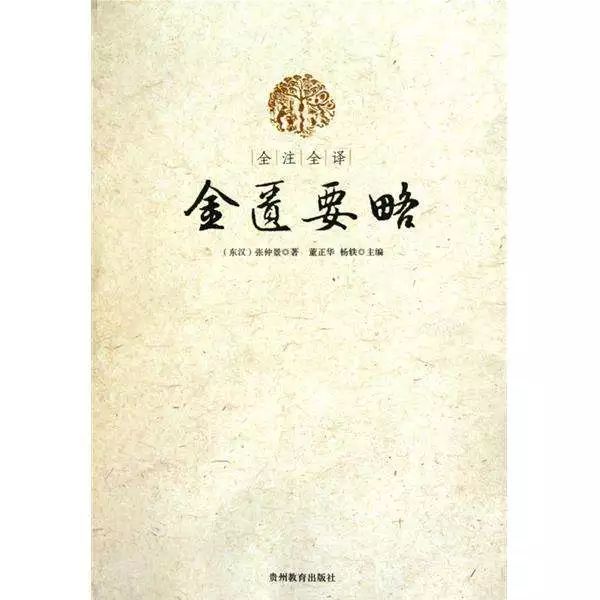
Based on Zhang Zhongjing’s records in the “Essentials of the Golden Chamber” regarding the “dizziness and nausea” syndrome (“冒”, meaning nausea and vomiting, refers to a condition characterized by dizziness and nausea/vomiting occurring together), he believed it was caused by “fluid retention in the heart area,” which closely resembles Meniere’s disease. I believe this condition arises from the retention of water and dampness in the inner ear, and I treated it with the “Ze Xie Decoction” (泽泻汤, zé xiè tāng), achieving excellent clinical results.
The composition of Ze Xie Decoction consists of just two herbs—Alisma (泽泻, zé xiè) and Atractylodes (白术, bái zhú). Alisma is recorded in the “Shennong’s Herbal Classic” (神农本草经, Shénnóng Běncǎo Jīng) as being effective for “wind, cold, damp obstruction, and fluid elimination”; Atractylodes, as noted in the “Record of Famous Physicians” (名医别录, Míng yī bié lù) by the Jin dynasty physician Tao Hongjing, is said to “eliminate phlegm and water, expel wind and resolve swelling,” and is also known to “warm the stomach and eliminate food stagnation.”
These two herbs work together: Alisma primarily promotes urination to eliminate internal water and dampness, while Atractylodes supports the spleen to eliminate phlegm and water. This combination effectively addresses both the symptoms of water retention and the root cause of phlegm-damp due to spleen deficiency, resulting in rapid therapeutic effects despite the small number of ingredients.
I once treated a 43-year-old female patient with Meniere’s disease for over three years. This time, her condition was triggered by fatigue, and she experienced severe dizziness, nausea, and vomiting, unable to eat, with water intake leading to vomiting. She felt slightly better lying still with her eyes closed, but any movement exacerbated her symptoms.
She presented with a heavy head, low voice, and during the consultation, she ran to the door to vomit twice, with the vomit being clear liquid. She reported not having eaten for a day and still felt nauseous. Her tongue was pale with a white greasy coating, and her pulse was wiry.
Based on the understanding of “fluid retention in the inner ear,” I prescribed Ze Xie Decoction: 30g of Alisma (泽泻, zé xiè) and 45g of fried Atractylodes (炒白术, chǎo bái zhú). I instructed her to use one and a half bowls of water to decoct until half a bowl remains, to be taken warm.
I advised the patient not to drink it all at once but to take a sip, wait about five minutes, and if there were no adverse reactions, to take another sip, gradually finishing the half bowl of decoction.
Surprisingly, the patient did not vomit after taking the medicine, gradually fell asleep, and did not wake up until the next morning. Upon waking, she felt as if her illness had disappeared. After two days of adjusting her diet with spleen-strengthening and damp-dispelling herbs, she was completely well and has not experienced any recurrence since.
Self-Assessment for Phlegm-Damp Constitution:
1. Dizziness, headache, and heaviness in the head.
In TCM, the head is the residence of the clear and the spirit, requiring nourishment from qi, blood, and essence, and should not be disturbed by turbid evils. If phlegm-damp rises and obstructs the clear, it leads to dizziness, headache, and a feeling of heaviness in the head.
Headaches and dizziness, especially those associated with hypertension, are common. Western medicine attributes hypertension to cerebral vascular spasms or loss of elasticity in blood vessels, leading to increased pressure due to obstructed blood flow.
From a TCM perspective, the phlegm-damp evil is heavy and turbid, and combined with the characteristic of phlegm being able to rise and fall with qi, it can obstruct the clear yang, filling and blocking the blood vessels, which may also lead to vascular spasms and loss of elasticity, resulting in elevated blood pressure.
Therefore, for hypertensive patients with symptoms of phlegm-damp obstructing the clear yang in the head, treating them with methods to clear and transform phlegm-damp can yield significant results.
Symptoms of dizziness, headache, and heaviness in the head caused by phlegm-damp may persist or fluctuate, but they are fundamentally different from those caused by qi and blood deficiency. Using tonics may not only be ineffective but may also exacerbate the condition, as they can further obstruct the clear.
If stubborn phlegm and stagnant blood accumulate and solidify, they can form tumors, residing in the brain or other parts of the body. Without transforming and dispersing the stubborn phlegm and stagnant blood, the tumor cannot be eliminated.
2. Nausea or vomiting phlegm and saliva, or a gurgling sound in the stomach, or a sticky, greasy mouth with a dry sensation and lack of thirst.
The phlegm-damp evil resides in the stomach and intestines, causing the stomach to lose its harmony and descent, leading to obstruction of the qi. This results in frequent nausea or vomiting of phlegm and saliva, or a gurgling sound in the stomach.
Phlegm-damp rising can lead to a sticky sensation in the mouth. Phlegm turbidity is originally transformed from body fluids, but it can also obstruct the movement of body fluids, leading to a dry mouth, as excessive water intake can exacerbate the phlegm condition, resulting in nausea.
These symptoms are often clinically diagnosed as gastrointestinal neurosis, and medications may often be ineffective. However, treating with methods to warm and transform phlegm-damp, or additionally focusing on soothing the liver and regulating the spleen, can yield rapid results.
3. A sensation of obstruction in the throat, difficulty swallowing, with symptoms appearing intermittently.
This condition generally begins with liver qi stagnation due to emotional distress, leading to liver depression and spleen deficiency. When the liver and spleen are not in harmony, the spleen’s qi is also suppressed, leading to the accumulation of fluids and phlegm, which rises and obstructs the throat, causing a sensation of obstruction and difficulty swallowing.
The characteristic of phlegm is that it can accumulate and disperse, and since this condition begins with liver qi stagnation, followed by spleen dysfunction leading to phlegm accumulation, it manifests as a sensation of obstruction in the throat, which may appear or disappear depending on emotional states.
These symptoms are often seen in female patients. If the condition persists, it may lead to deficiency of yin with phlegm. If only phlegm-transforming methods are used, it may further deplete yin fluids, exacerbating the sensation of obstruction and dryness in the throat. It is essential to combine sufficient nourishing yin herbs to nourish while transforming, allowing for the resolution of phlegm and qi obstruction.
4. Palpitations, insomnia, or fainting, convulsions, or mental disturbances, but neurological examinations show no abnormalities, nor are there signs of yin deficiency or yang excess.
“Phlegm qi obstructing the heart” and “phlegm obstructing the heart orifices” refer to this type of condition. TCM states that the “heart” also refers to brain function, as in “the heart governs consciousness” and “the brain is the residence of the spirit.”
Thus, when phlegm qi obstructs the heart orifices, it often manifests as disturbances in brain cortical function. Treating such conditions with methods to clear phlegm and open the orifices can often yield satisfactory results.
5. Stools coated with phlegm and saliva, or constipation with difficulty passing stools.
Phlegm turbidity resides in the stomach and intestines, leading to stools coated with phlegm and saliva. Treating with methods to strengthen the spleen and transform phlegm should yield results. If phlegm turbidity resides in the intestines, obstructing the qi, it can lead to constipation (though the stools are not dry). In such cases, the more one tries to moisten the stools, the more constipated they become. Using methods to move qi and transform phlegm can lead to rapid relief.
6. Low-grade fever with a feeling of heaviness, or a sensation of heat without a significant increase in body temperature.
Phlegm is a yin evil, characterized by its stickiness and tendency to remain hidden. When phlegm and turbidity accumulate, they obstruct yang qi, preventing it from expanding, leading to a condition of yin not matching yang, where yin obstructs yang, resulting in fever. Phlegm turbidity obstructing yang and causing fever is distinct from fevers caused by external pathogens or those associated with blood or qi deficiencies, characterized by a feeling of heaviness without significant elevation in temperature. Many cases of unexplained low-grade fever without signs of yin deficiency or qi deficiency fall into this category.
If one carelessly administers nourishing yin and qi tonics, it may further assist phlegm in clinging to the evil, resulting in persistent low-grade fever and heaviness. By carefully examining the tongue and pulse, and accurately diagnosing the true nature of the symptoms, focusing on transforming and dispersing phlegm-damp can yield satisfactory results.
7. Localized heat or cold in the limbs (or a cool sensation in the back, or numbness without pain or itchiness, or differences in size or sensation in certain areas of the body, but neurological, orthopedic, and dermatological examinations reveal no abnormalities).
“Phlegm follows qi and reaches everywhere,” and “the sensations experienced can vary, leading to numerous diseases.” When phlegm and turbidity accumulate and obstruct the flow of qi and blood, the above symptoms can manifest. If phlegm and turbidity remain unresolved, the affected areas may also develop swelling or nodules.
8. Ulcers, erosions, or exudation of thick phlegm, which do not heal for a long time, or localized skin thickening without exudation.
Phlegm-damp retention or heat phlegm accumulation can obstruct local qi and blood flow, leading to the exudation of phlegm and turbidity. If this condition persists, the righteous qi may weaken, and the affected area may become susceptible to external wind, cold, or heat, making it difficult for the affected area to heal. This condition begins with phlegm and turbidity accumulation, leading to qi and yin deficiency, accompanied by stubborn phlegm that does not transform.
If the affected area develops thickened skin, it indicates a deficiency of qi and yin, along with the presence of stubborn phlegm accumulation.
9. Chest tightness and shortness of breath, with a feeling of fullness in the back, often exacerbated by overcast or changing weather.
Phlegm-damp stagnation in the chest obstructs the yang qi (包栝肺气失于肃降) and disrupts the flow of qi, leading to feelings of chest tightness and shortness of breath. If phlegm and turbidity stagnate in the back, it can lead to a feeling of fullness or coldness in that area. Patients often sigh or pound their chests to temporarily relieve the discomfort. If phlegm and turbidity obstruct the yang qi excessively, it can lead to temporary stagnation of qi and blood flow, resulting in pain in the chest area, which can lead to severe acute myocardial infarction in some cases.
10. Tumors or nodules, either beneath the skin or within the abdomen, can also occur in other tissues or organs, with no visible changes on the skin or a slight cool sensation, or a dull complexion.
Han Xuejie: Six Manifestations of Blood Stasis in the Body
Blood stasis is a common pathogenic factor in TCM theory. Analyzing from the TCM perspective, conditions such as stroke, coronary heart disease, tumors, and liver cirrhosis are all related to blood stasis. What manifestations indicate the presence of blood stasis in the body? What TCM herbs are used to treat different types of blood stasis? Let us learn from the clinical experience of renowned physician Shen Shaogong.
Three Indicators of Blood Stasis
Localized Blood Stasis
The main symptoms include fixed stabbing pain, tenderness upon palpation, and lumps. Liver cirrhosis is a lump, also known as a “zheng jia” (癥瘕), which can be painful upon palpation. Coronary heart disease often presents with severe pain, typically sharp or constricting.
Systemic Blood Stasis
The main symptoms include cyanosis of the lips and nails, a purple tongue, and a choppy pulse. If a patient’s tongue shows purple spots, it indicates blood stasis. If the entire tongue is purple, it indicates not only blood stasis but also coldness; simply using blood-activating methods will not suffice; warming herbs such as cinnamon twig (桂枝, guì zhī) or Sichuan pepper (川椒, chuān jiāo) should be used. In Sichuan, 10g to 20g of Sichuan pepper is acceptable, but in northern regions, only 1g should be used, or the patient may not tolerate it.
Abnormal Blood Loss
The main symptoms include bleeding with dark blood clots. One patient with lung cancer experienced continuous hemoptysis despite various hemostatic methods, such as cooling blood to stop bleeding, warming and nourishing blood, and tonifying qi to stop bleeding, all of which were ineffective. Upon examination, I noticed the color of the blood was dark and stagnant, and the sublingual veins were tortuous. I used the “Tao Hong Si Wu Decoction” (桃红四物汤, táo hóng sì wù tāng). Of course, I informed the family that this was a last resort for a cancer patient, and after a month of treatment, if the bleeding did not stop, it would be life-threatening, and the family agreed. A junior doctor asked if such a large volume of blood could still be treated with blood-activating methods. I replied that I had already informed the family, and we had to take risks. After taking two doses of the medicine, the blood volume decreased, and within a week, the bleeding stopped, demonstrating the efficacy of TCM’s differentiation and treatment.
I identified the abnormal blood as blood stasis and used blood-activating herbs, which is called “removing stasis to generate new blood”; once the blood stasis was removed, new blood was generated, and the blood returned to the meridians, stopping the bleeding. Of course, I also added other herbs, including flower of the daylily (花蕊石, huā ruǐ shí), blood residue (血余炭, xuè yú tàn), Sichuan fritillary powder (川贝母粉, chuān bèi mǔ fěn), and Panax notoginseng powder (三七粉, sān qī fěn) in a 1:1:1:1 ratio. Flower of the daylily and blood residue are both hemostatic herbs, while Panax notoginseng is used to stop bleeding. These four herbs were encapsulated in capsule 1, with each capsule containing 0.3g, and the patient was instructed to take five capsules at a time, equating to 1.5g of powder, two to three times a day. This approach is effective not only for lung cancer but also for any patient experiencing hemoptysis.
Six Types of Blood Stasis
Qi Stagnation with Blood Stasis
Characterized by a deep, wiry pulse, distending pain, tenderness, and lumps. In addition to resolving stasis, qi must also be regulated. The two primary herbs for regulating qi are curcuma (郁金, yù jīn), which moves blood and qi, and bitter orange (枳壳, zhǐ ké).
Cold Congealing Blood Stasis
Characterized by a slow, deep pulse, tenderness, dark-colored stasis, and a pale face, which improves slightly with warmth. This type of blood stasis requires warming and resolving stasis, using two main herbs: cinnamon twig (桂枝, guì zhī) and myrrh (乌药, wū yào).
Heat-Accumulated Blood Stasis
Characterized by a rapid pulse, hard pain in the lower abdomen, and a frenzied mental state. This type of blood stasis requires clearing heat and resolving stasis, using two main herbs: bamboo juice (竹沥水, zhú lì shuǐ) and whole gourd (全瓜蒌, quán guā lóu).
Qi Deficiency with Blood Stasis
Characterized by a thin, slow pulse, palpitations, fatigue, and lumps. This type of blood stasis requires tonifying qi and resolving stasis, with a heavy emphasis on astragalus (生黄芪, shēng huáng qí), which can be used in doses of 30-60g for tonifying qi. Blood-activating herbs can include earthworm (地龙, dì lóng).
Yang Deficiency with Blood Stasis
Characterized by a slow, thin, and weak pulse, dark complexion, cyanosis of the lips, abdominal distension, and cold limbs. This type of blood stasis requires warming yang and resolving stasis, using warming herbs such as deer antler powder (鹿角霜, lù jiǎo shuāng) and safflower (红花, hóng huā).
Yin Deficiency with Blood Stasis
Characterized by a thin, wiry pulse, thin body, and mild pain. This type of blood stasis requires nourishing yin and resolving stasis, with primary herbs being ophiopogon (麦冬, mài dōng) and reed root (芦根, lú gēn), and blood-activating herbs being peony root (牡丹皮, mǔ dān pí).
Five Locations of Blood Stasis
Heart Obstruction
Characterized by a thin, knotted pulse, palpitations, and mental disturbances, often associated with arrhythmias and coronary heart disease. The main herbs are sappan wood (苏木, sū mù) and hawthorn (生山楂, shēng shān zhā). These two herbs are unique; orthopedic doctors often use sappan wood, while it is not commonly used by internal medicine doctors.
Liver Obstruction
Characterized by hypochondriac pain and lumps. The main herbs are vinegar-prepared tortoise shell (醋鳖甲, cù biē jiǎ) and red peony (赤芍, chì sháo), with a large dose of vinegar-prepared tortoise shell, around 30g.
Pulmonary Obstruction
Characterized by hypochondriac pain and hemoptysis. The main herbs are mint (薄荷, bò hé) and flower of the daylily (花蕊石, huā ruǐ shí).
Abdominal Obstruction
Characterized by lumps, tenderness, amenorrhea, and dysmenorrhea. The main herbs are ligusticum (泽兰, zé lán) and earthworm (地龙, dì lóng).
Extremity Obstruction
Characterized by swelling, muscle bleeding, and even purplish discoloration. The main herbs are ligusticum (路路通, lù lù tōng) and chicken blood vine (鸡血藤, jī xuè téng).
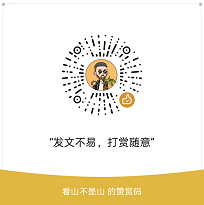
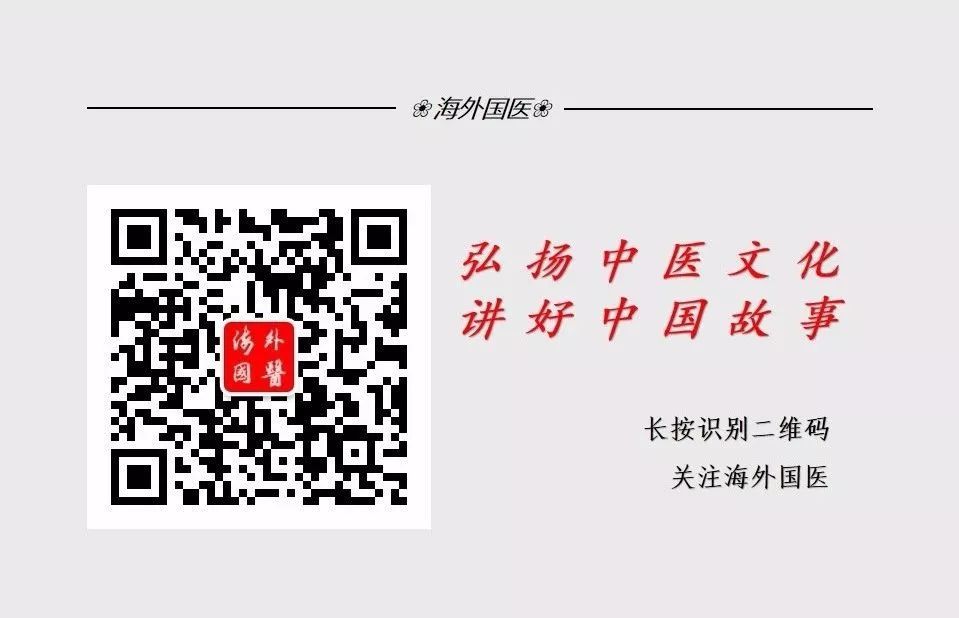
Click “Read the original text“↙ for more exciting content

